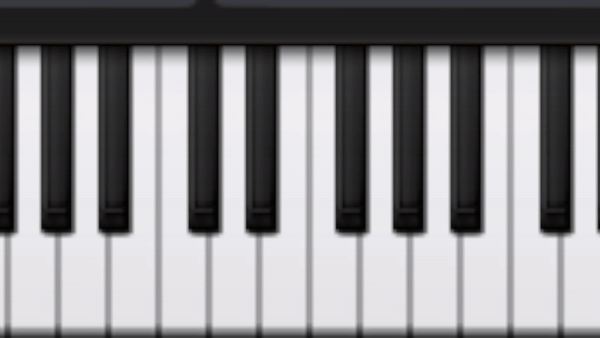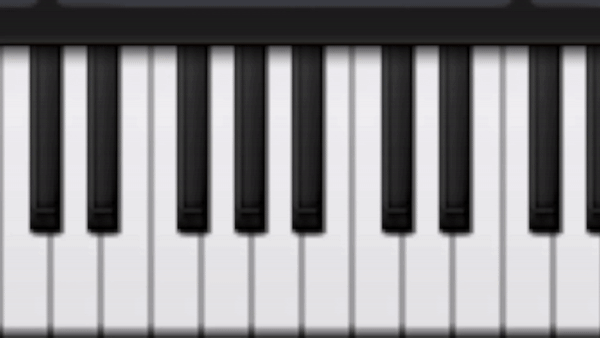
Let’s put what we have learnt in the previous few sessions into a very important concept all musicians must know – Diatonic Chords.
This post requires you to understand the following concepts:
Check out the previous lessons if you have not already!
What are Diatonic Chords
Diatonic Chords are a family of chords that belong to the same Major Scale. They are built on each degree of the scale.
The term Diatonic can be broken down into Dia from latin which means ‘through’ and Tonos from ancient Greek which means ‘of the key’.
The term describes something being part of the key.
Diatonic Chords can be derived from any type of scale, with the most commonly used in Pop music being the Major scale.
How to form Diatonic Chords
As always, we will explore Diatonic Chords in the key of C Major. As a quick refresher, here are all of the notes in C Major:

As mentioned, Diatonic Chords are built on each degree of the scale. Starting on the first degree of C Major, we will build a triad with notes that are part of the scale:

Congratulations! You have built the first Diatonic Chord. Let us do the same for all other degrees of the scale:

Nashville System
The Nashville System represents Diatonic Chords as Roman Numerals, with uppercase and lowercase numerals representing Major and Minor chords respectively.
Chords are numbered based on which degree of the scale they are. For example, here are the Diatonic Chords of C Major:
| Note | Degree | Roman Numeral |
|---|---|---|
| C Major | 1 | I |
| D Minor | 2 | ii |
| E Minor | 3 | iii |
| F Major | 4 | IV |
| G Major | 5 | V |
| A Minor | 6 | vi |
| B Diminished | 7 | viio |
Instead of using letters and names such as C Major chord and A Minor chord, they can be easily called I and vi.
This system is used as a shorthand for communicating chords efficiently. It is also why you hear musicians say “2 – 5 – 1 in the key of E Major”.
Tonality of the chords
Now that we have created all of the possible Diatonic Chords in C Major, you may notice that not all Diatonic Chords are Major chords.
The only Major Diatonic Chords are I, IV, and V. All other Diatonic Chords are Minor, except for viio which is Diminished.
This pattern of tonality is the same for every other Major key. Thus, it is a good technique to use when deriving Diatonic Chords.
To derive the Diatonic Chords of A Major:
- Step #1: List out all of the notes of a Major key eg. A, B, C#, D, E, F#, G#
- Step #2: Apply the Pattern eg. A Major, B Minor, C# Minor, D Major, E Major, F# Minor, G# Diminished
Why Diatonic Chords
Diatonic Chords are the fundamentals of an intermmediate musician.
Just like how beginner musicians should be able to recall Major Scales easily, intermmediate musicians should be able to recal Diatonic Chords at the snap of a finger.
As a musician, you will be playing so much music that it would be impossible not to have played any Major key.
There will also be times where you will need to change keys on the fly, and depending on your proficiency with Diatonic Chords, it will determine the quality of your performance.
Chord Progressions
Finding chords
Understanding the concepts of Diatonic Chords can bring many benefits when you are learning new songs and jamming with others.
As a rule-of-thumb, most chords in a song are often Diatonic Chords, pre-defined by the overall key.
This means that you will have an easier time narrowing down what chords are used once you know the key of the song.
For example, once you know the song is in B Major, you can take out chords from your B Major inventory and start to fiddle with them.
Communicating
Communication is also enhanced once you understand Diatonic Chords. As mentioned above, musicians use Roman Numerals and numbers.
This keeps the actual chords themselves open to intepretation.
For example, you have a chord progression of C Major, A Minor, F Major, and G Major. It’s easy to understand and play.
But what happens if you need to change keys? Songs don’t always stick to the same key, and you need to adjust based on your singer.
Instead, when you say 1 – 6 – 4 – 5, you can play the song in any key just by recalling the Diatonic chords.
This adapability is the mark of a good and versatile musician.
Relative Pitch
Relative Pitch is the practice of figuring out chords through hearing.
However, hearing is not the only aspect that goes into Relative Pitch, as it is also important to understand the Nashville System to have any chance of success.
When using Relative Pitch to decipher a song, you may not know the key until you get to an instrument.
However, you can listen for the relationships betwen chords and use the Nashville System and tag a number to each chord.
This way, you will have a chord progression ready to use. Once you know the key of the song, you will be able to reveal the rest of the chords.
Borrowed Chords
Lastly, Diatonic chords will help you to weed out chords that are not part of the key.
These chords are called Borrowed chords, and are used in modern music more frequently than you think.
A great example of a song using Borrowed Chords is Creep by Radiohead:
It’s chord progression is I – III – IV – iv.
Notice that the III is a Major chord, as compared to your normal Minor iii chord.
The iv is also altered from your usual Major IV chord.
Conclusion
Never lose sight of Diatonic Chords. They are one of the crucial mechanics that make up the popular songs that you know and love today
Mastering Diatonic Chords as one of your goals will bring you closer to becoming a versatile and efficient musician.
